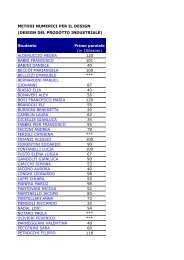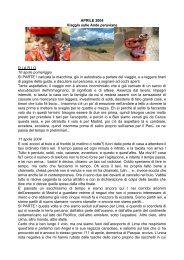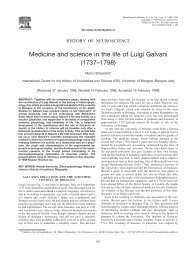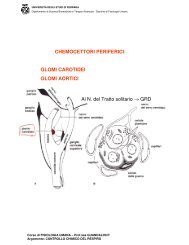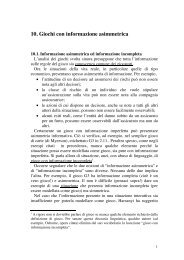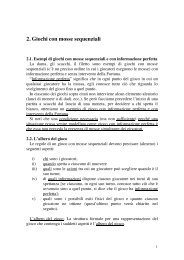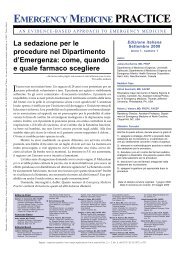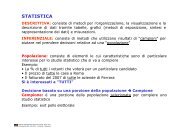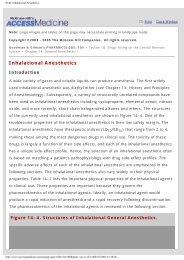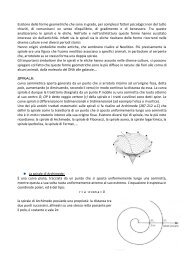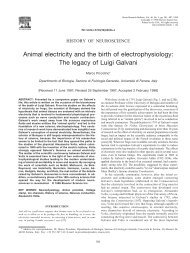Neopuff Infant Resuscitator Technical Manual - utenti
Neopuff Infant Resuscitator Technical Manual - utenti
Neopuff Infant Resuscitator Technical Manual - utenti
Create successful ePaper yourself
Turn your PDF publications into a flip-book with our unique Google optimized e-Paper software.
4.2.3 Setting Maximum Pressure Relief to 40cm H2O<br />
This is required if the maximum pressure relief has been changed. The factory setting for<br />
he maximum pressure setting is 40cmH2O. This should be adjusted in accordance with<br />
hospital protocol.<br />
1. Adjust gas flow to 10 LPM.<br />
2. Turn the peak inspiratory pressure knob fully clockwise<br />
3. Adjust the maximum pressure relief valve clockwise or counter-clockwise until the<br />
manometer reads 40cm H2O.<br />
4. Turn the peak inspiratory pressure knob anticlockwise so the manometer reads 20cm<br />
H2O and shut off the gas flow.<br />
4.2.4 Manometer Replacement<br />
The manometer is not a serviceable item and must be replaced by Manometer Kit<br />
043040841.<br />
1. Remove back cover, fixed by four screws<br />
2. Disconnect tube from manometer.<br />
3. Remove manometer by unscrewing the two retaining nuts<br />
4. Fit the new manometer into front panel, tighten retaining nuts and re-connect manometer tube.<br />
5. Record date code found on back of replacement manometer and serial number of<br />
<strong>Neopuff</strong> infant resuscitator from back cover and send copy to Fisher & Paykel<br />
Healthcare, Attention Neonatal Regulatory Affairs.<br />
6. Re-fit front panel to back cover with four screws.<br />
7. Complete Testing of Manometer (4.2.2)<br />
4.2.5 Valve Replacement<br />
Note: the valves are an integral part of the valve, fascia and manifold assembly and are not<br />
able to be serviced. Please specify model number from parts list (3.2.1) when ordering a<br />
replacement valve assembly.<br />
1. Remove back cover, fixed by four screws<br />
2. Remove plugs and remove end caps by unscrewing four cap screws per end.<br />
3. Disconnect tube from manometer.<br />
4. Remove manometer by unscrewing the two retaining nuts<br />
5. Record valve assembly and <strong>Neopuff</strong> TM <strong>Infant</strong> <strong>Resuscitator</strong> serial numbers and send<br />
copy to Fisher & Paykel Healthcare, Attention Neonatal Regulatory Affairs.<br />
6. Fit existing manometer into new valve assembly panel, tighten retaining nuts and reconnect<br />
manometer tube.<br />
7. Re-fit front panel to back cover with four screws.<br />
8. Re-fit ends caps with four cap screws per end and replace plugs.<br />
9. Complete Testing of Manometer (4.2.2)<br />
2.0 Cleaning of the RD900 <strong>Neopuff</strong> TM <strong>Infant</strong><br />
<strong>Resuscitator</strong><br />
2.1 Cleaning<br />
Clean the external surfaces of the <strong>Neopuff</strong> TM <strong>Infant</strong> <strong>Resuscitator</strong> either weekly or between<br />
patients using a damp cloth with dilute mineral acids, an acid-salt solution or correctly diluted<br />
disinfectant-detergent solution. Ensure that the manufacturer’s directions for use of the<br />
cleaning agent are followed. Dry all surfaces after cleaning with a clean soft cloth or paper<br />
towel<br />
2.2 Test Lung<br />
If required the test lung can be sterilized using ethylene oxide gas only. Please note that the<br />
test lung is constructed of latex and is susceptible to attack by solvents. Ensure no solvents<br />
are used to clean the test lung.<br />
2.3 WARNING<br />
• Latex construction of the test lung may cause irritation.<br />
2.4 CAUTIONS<br />
• DO NOT use any compounds containing aromatic hydrocarbons, ammonia, aqueous<br />
solutions or abrasive products. Use of alcohol based solutions may cause plastic<br />
surfaces to craze and crack.<br />
• Ensure all oxygen and air supplies are turned off and disconnected from the <strong>Neopuff</strong> TM<br />
<strong>Infant</strong> <strong>Resuscitator</strong> before performing cleaning procedures. Explosion and fire hazards<br />
can exist when performing cleaning procedures in an oxygen-enriched environment.<br />
• Before cleaning, remove and discard all used single use products using the recommended<br />
method of disposal.<br />
• Do not attempt to clean single use products.<br />
• The above methods of cleaning are suitable for the components, but the suitability of any<br />
method for a particular bacteriological situation is the responsibility of the user.<br />
• Do not autoclave or gas sterilise the <strong>Neopuff</strong> TM <strong>Infant</strong> <strong>Resuscitator</strong>.<br />
• Ensure all parts and accessories are checked before returning the device to service<br />
• For ethylene oxide gases: Some carrier gases can cause stress cracking and are not<br />
suitable. If in doubt check with chemical supplier.<br />
• Do not reuse single use <strong>Neopuff</strong> TM <strong>Infant</strong> <strong>Resuscitator</strong> products



